An initial version of this story ran on Tech in Asia.com.
In the world's hardest-to-reach and most under-resourced areas, how do we establish an ability to collect, track and share data on emerging disease pandemics with global implications? Over the past two years, international grant-maker Skoll Global Threats Fund, with support from Silicon Valley nonprofit Innovative Support to Emergencies, Diseases and Disasters (InSTEDD), has spearheaded an "EpiHack" approach to stopping the spread of a pandemic from remote and under-resourced areas. The approach deploys a three- to four-day international workshop in low-income countries to produce ideas, tools and a network that can act as a first line of surveillance for disease outbreaks.
To date, three EpiHacks have been implemented, the first two in Phnom Penh, Cambodia, and Chiang Mai, Thailand, respectively, and most recently from June 17-20 in Laos. The events have encouraged the development of an exciting new pedagogy and process towards building a defense against pandemics. (Contrast this approach with others that are often planned at a high level but met with extreme challenges when implemented in low-bandwidth environments.)
Unpacking the EpiHack approach in Laos reveals how the process creates actionable solutions and builds networks that are useful when applied to pandemic defense as well as everyday health challenges in under-resourced areas.
Day One: Get people together and identify the challenges
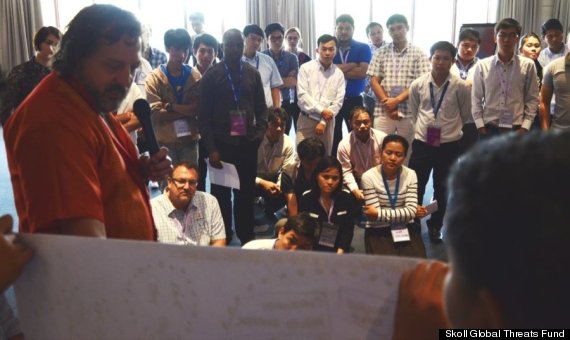
Dr. Mark Smolinski of the Skoll Global Threats Fund presents to the EpiHack delegates
The starting point for the EpiHack is getting the right mix of participants in a space where they will be able to stay creatively focused on the task at hand. In Laos, the 60 attendees included government officials, forward-thinking health professionals and innovative technology specialists. The participating organizations were curated by InSTEDD and Skoll Global Threats and included the Laos Ministry of Health, Mekong Basin Disease Surveillance, Opendream, the National University of Laos and the Southern African Centre for Infectious Disease Surveillance. The blend of health and tech sectors brought a unique dynamic to the group and allowed for new discoveries as a "remixed" community. Once gathered together in the same room, the first sessions were spent exploring hack-a-thon methodology and a specific disease threat in Laos: dengue fever.
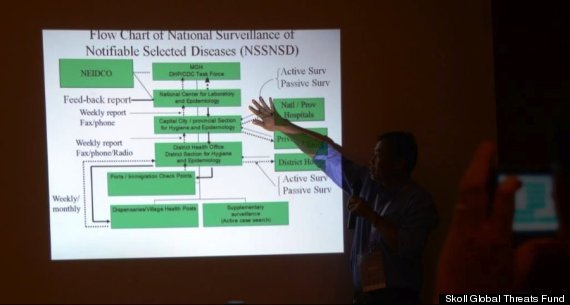
Health system for National Surveillance of Notifiable Selected Diseases (NSNSD) is shared with participants.
Presentations to the entire group helped create a common understanding among the diverse group members about how disease information is currently tracked, the challenges faced by those collecting and responding to that information, and existing tools that already are being used for the purpose of information management and communication between health workers and health systems. By building off existing open-source tools like InSTEDD's VerboiceTM - a free and open-source tool that makes it easy for anyone to create and run projects that interact via voice - we could combine building blocks in new ways and develop usable solutions in a matter of days.
Day Two & Three: Prototype Solutions
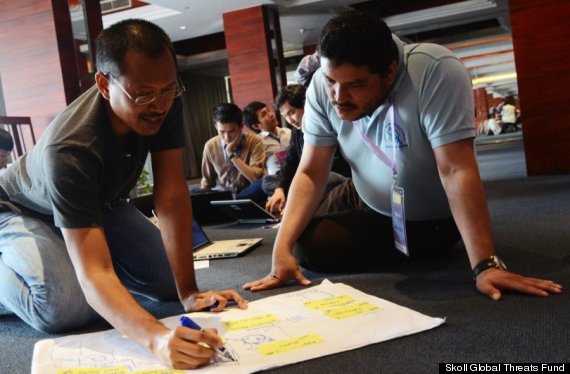
Participants from EpiHack Laos in a prototyping exercise
With an understanding of issues facing the Ministry of Health, Laos staff members, the country's health workers, and a shared perspective of how to combat diseases like dengue fever, the participants meshed their skills to develop prototypes that met the challenges and context presented on day one. Local Laotian developers and government officials teamed up with health professionals and technologists from Thailand, Vietnam, Tanzania, Cambodia and Nicaragua to brainstorm innovative solutions at the intersection of their knowledge and expertise. The participants were pushed not only to think of solutions but also to build rapid prototypes that could be quickly tested for potential impact.
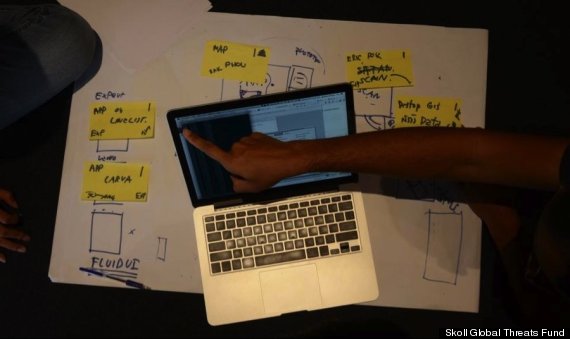
Teams from SACIDS and Opendream prototype a dengue tracking tool during EpiHack in Laos
An exemplary prototype created at EpiHack Laos aimed to prevent the spread of the mosquitoes that cause dengue by combining text message and voice services into a mobile app. The app would engage community and health officials by conducting surveys on larvae. In addition to the app, a surveillance system was prototyped to demonstrate to the health ministry present how the data collected could be sorted and visualized on a map. When deployed, the prototype would use real-time data updates from the field make it easy and faster to detect any outstanding cases from villages or provinces.
Day Four: Present & Call to Action
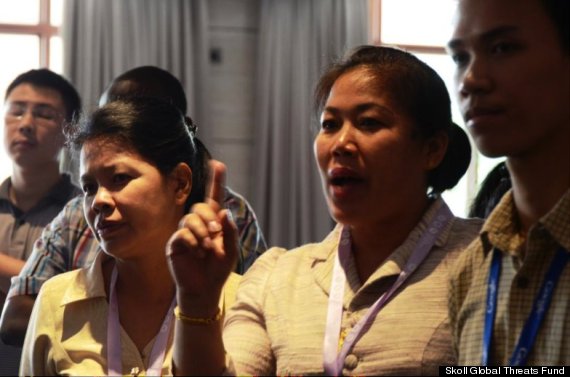
Epihack Laos participants providing presentation feedback.
With prototypes in hand, the final day crystallizes the critical connections and ideas formed at the EpiHack through presentations, feedback sessions and a final call to action. The discussions spurred among health officials and software developers through presentations and prototyping contribute to the early design of tools that will be used to combat emerging pandemics. The final call to action provides a shared vision for future activities and continued collaboration between the participants. This creates a network and action plan to build defense in the remote, under-resourced areas that may be the first to fight against a pandemic that threatens us all.
Click through the slideshow to find what EpicHack participants had to say about their experience.
This article was written in collaboration with the team from Cisco CSR, which also supported InSTEDD in the development of Watchfire, software that uses GPS, voice, and text messages to identify disaster response volunteers in half the time and better deploy expertise in the first critical moments of a crisis. To read more information on Cisco's involvement with InSTEDD, please visit: http://csr.cisco.com/casestudy/instedd
--
To learn about EpiHacks and the innovative work being done to safeguard humanity against the next global pandemic, visit Skoll Global Threats, to follow the work of InSTEDD add us on Twitter @InSTEDD or contact info@instedd.org
